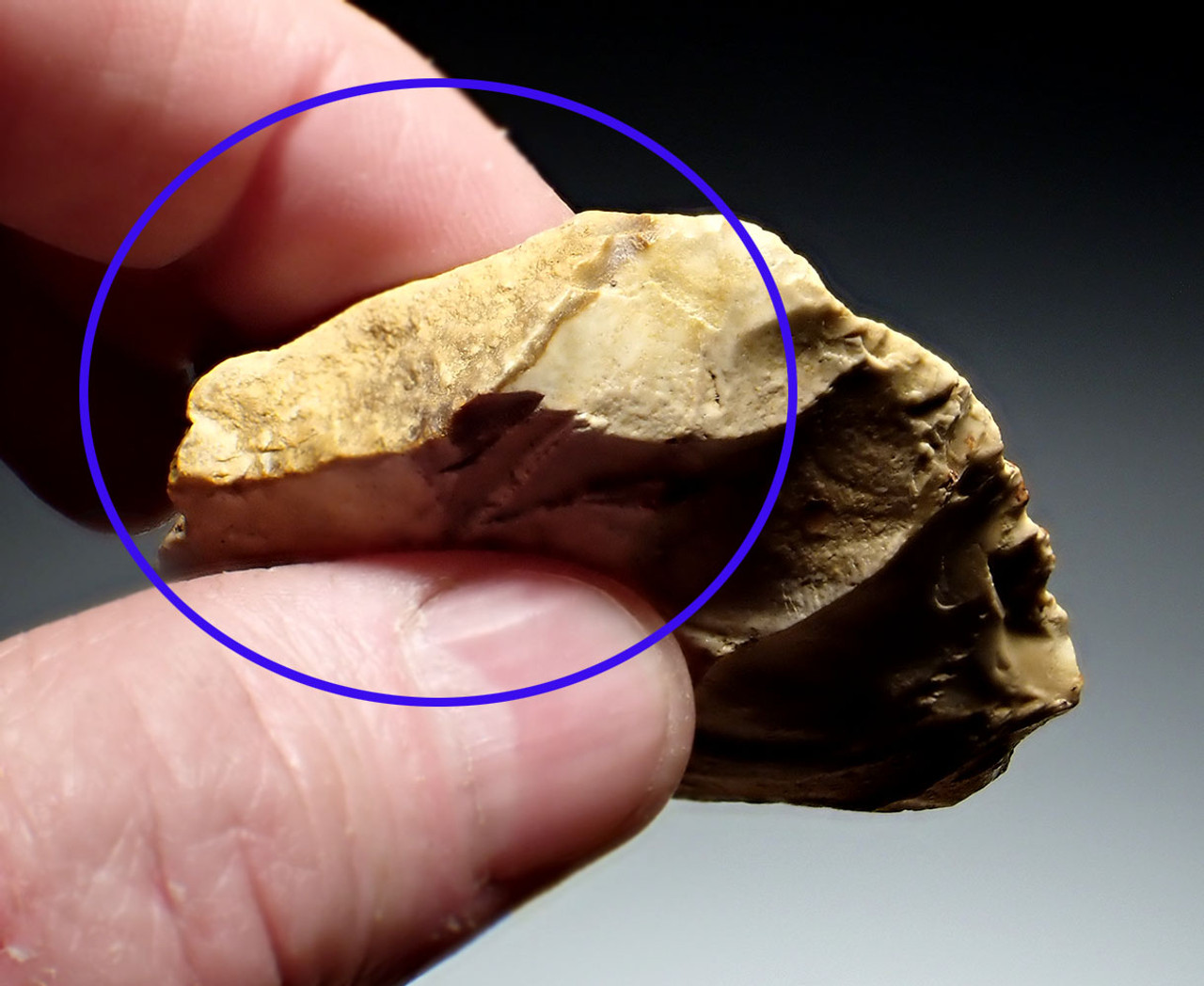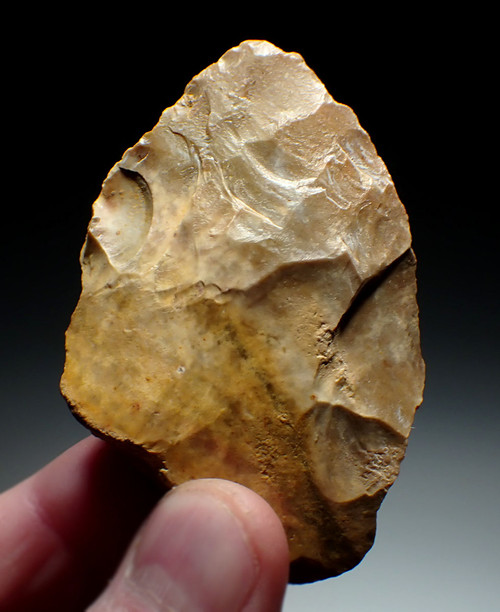Product Description
SEE MORE NEANDERTHAL MOUSTERIAN TOOLS
With the finest flaking and workmanship, this flint AMYGDALOID biface hand axe was made in the Mousterian Tool Tradition by Neanderthals, over 40,000 years ago. It was collected from a former Neanderthal occupation site in what is now Caen (Normandy), France. The flaking and form indicate it was made by a highly skilled Neanderthal flint knapper with a deep understanding of ergonomics and aesthetics.
This exceptional Neanderthal hand axe is complete and devoid of any modern damage or alterations. Intelligent design features include incorporating a natural concave face of the flint nodule used to be the central comfort of a well-design grip. The narrow cross-section profile and supreme Levallois flaking make this specimen stand out as a prize example of Neanderthal tool understanding. The warm golden cream patina and naturally glossy soil sheen are a result of millennia of burial by the ground minerals it was once subjected to. This sheen on the surface highlights the superb prehistoric Neanderthal craftsmanship in the flint. The reduced size of these Mousterian hand axes set a new milestone of human achievement in tool technology. In contrast to the larger, cruder Acheulean hand axes made by earlier Homo erectus humans, this prehistoric prize specimen wonderfully showcases the advanced technological developments and flaking skills of the Neanderthal humans that replaced them, in Europe. Authenticity is evidenced by the lack of any modern crushing, as well as the presence of heavy patina and prehistoric minerals deep in hinge fractures, as well as all microscopic crevices.
Fine quality Mousterian Neanderthal tools are rare and often move from one private collection to the next as most sites are now depleted, destroyed, or built over. All are protected by law forbidding modern digging and private collecting. Established dealers and auction house realized prices have already shown a trend of steady price appreciation over the past decades. Over time, high grade early human Paleolithic stone tools will most definitely continue to appreciate as collector demand outpaces the finite supply circulating in the market with many collectors buying pieces and never reselling. Investment aside, no Paleolithic collection should be without representative tools of one of the most famous primitive humans in history!
Unlike their much larger predecessors of the Sahara during the Acheulian, Mousterian handaxes are much smaller in comparison. Mousterian hand axes are mostly likely considered to be the most prized tools of the Neanderthals considering the work involved to manufacture them compared to flake tools.
 US DOLLAR
US DOLLAR
 EURO
EURO
 AUSTRALIAN DOLLAR
AUSTRALIAN DOLLAR
 CANADIAN DOLLAR
CANADIAN DOLLAR
 POUND STERLING
POUND STERLING
































